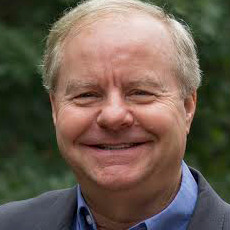Church attendance appears to be a secret weapon against the problem of suicide.
In fact, it’s “secret” because faith and religious activity have been seriously underrated as aids to discouraging self-hurt, writes Ericka Andersen in the Wall Street Journal.
In her article, “Is God the Answer to the Suicide Epidemic?” Andersen notes that “45,000 Americans take their own lives each year and 25 times as many attempt to. A crisis of this magnitude requires every possible effort.”
And yet, even though research shows religious people more likely to be happier and less self-destructive on the whole than non-believers, many experts in suicide prevention leave out religion as a preventative factor.
“Every year, institutions and organizations devoted to reducing the toll of suicide in America’s communities publish resources devoted to prevention,” Andersen write. “Some of the most prominent ones come from Suicide Prevention Lifeline and the American Foundation for Suicide Prevention. Yet attending religious services isn’t included on these lists of resources. It’s time for these and other groups to consider faith as a legitimate prevention method.”
She notes that a 2016 study in JAMA Psychiatry found that American women who attended a religious service at least once a week were five times less likely to commit suicide. The findings were based on data from 90,000 women from 1996 to 2010.
In January, the Pew Research Center released a study, “Religion’s Relationship to Happiness, Civic Engagement and Health Around the World: In the U.S. and other countries, participation in a congregation is a key factor.”
The researchers found that “people who are active in religious congregations tend to be happier and more civically engaged than either religiously unaffiliated adults or inactive members of religious groups,”
A Common Misconception about Unbelief
One of the more heavily publicized trends has been the growth in the number of “nones” in surveys about religious faith. Some polls show that up to 25 percent now choose “atheist, agnostic or ‘nothing in particular’” when asked about religious affiliation. The recurring, common media takeaway is that America is becoming atheistic.
Given religious participation’s role in producing happiness and even preventing suicide, a sharply more secular America would seem to be ripe for producing more suicides.
However, the data may be quite misleading, according to Glenn Stanton, a researcher at Focus on the Family, who noted in The Federalist that Pew’s latest figures show that only 3 percent of the U.S. population identifies as atheist. “Yes, there has been a sizable increase here over the last decade, but that’s up from only 1.6 percent of all adults,” he writes in an article adapted from his new book “The Myth of the Dying Church: How Christianity Is Actually Thriving in America and the World.”
“All in all, it’s a ripple. … Comparatively, if you could fit all the serious Christians in the United States on a couple of Greyhound buses, all the atheists could fit in the backseat of a Prius with room to spare.”
What appears to be happening is that people who were nominal Christians in mainline denominations have ceasing identifying with those churches and now describe themselves as unaffiliated, or “nones.” That’s a far cry from declaring outright atheism, says Stanton, who points out that nondenominational, evangelical churches are bucking the trend and growing rapidly.
“Robust Christianity is not shrinking, not even among young adults,” he writes. “It is holding quite firm and even growing in many important ways. It is increasingly liberalized, orthodoxy-denying, and lukewarm faith that’s tanking as if it has a mill stone around its neck.”
Given that more than 90 percent of the population says it believes in God, while the culture is more aggressively secular, we seem to have a societal mismatch. Something’s got to give. This could presage a revival or at least a period in which the clear benefits of church attendance result in people abandoning the ranks of unbelief and weak belief and adopting a more robust faith life. If that happens, then unhappy social indices such as the suicide rate should fall.
Offer hope
Ericka Andersen ends her Wall Street Journal article on a hopeful note:
“People living in our increasingly secular culture are hungry for spiritual wisdom and transcendent purpose. For the already vulnerable, this drought of meaning and connection can have deadly consequences. For thousands of years, practicing a shared faith was a principal way to meet these spiritual needs. It can be again.”
And, Focus on the Family’s Stanton offers this: “Don’t believe the alarmist Chicken Littles who say real Christianity is going the way of the VHS player. The best research from the leading academics shows them wrong time and again. It’s just that many of our most vocal commentators and journalists are not doing the needed due diligence to dig deeper into the larger literature on the topic. If they did, they would find a very different story: One of increasingly vibrant faith.”
A writer for Timothy Partners, Ltd. He is a regular weekly columnist for The Washington Times and Townhall.com and is frequently published by AmericanThinker.com, DailyCaller.com, OneNewsNow.com, and others. He has authored the following books: “A Strong Constitution: What Would America Look Like If We Followed the Law” (D. James Kennedy Ministries, 2018), Invested with Purpose: The Birth of the Biblically-Responsible Investment Movement, and A Nation Worth Fighting For: 10 Steps to Restore Freedom.







